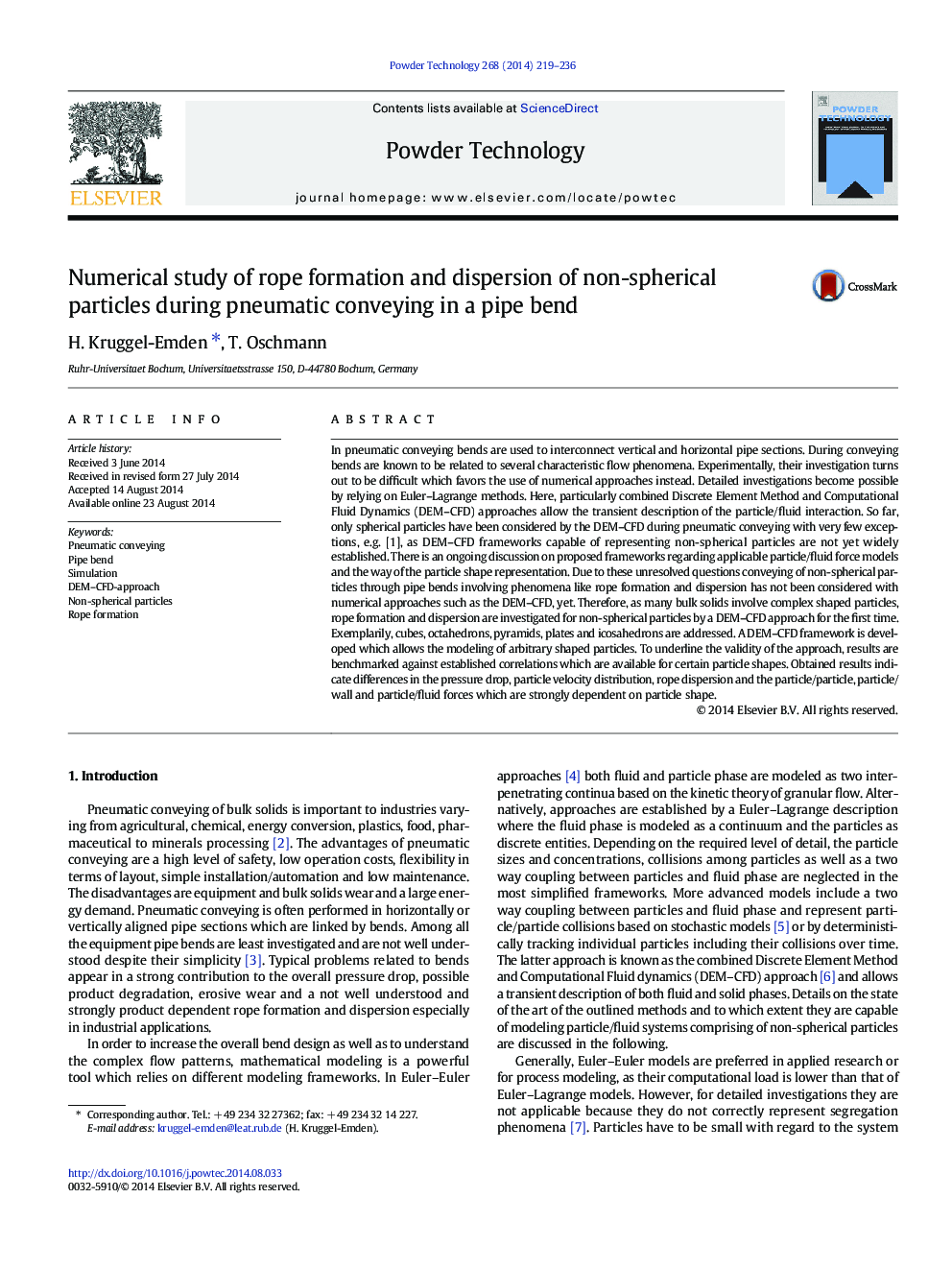| کد مقاله | کد نشریه | سال انتشار | مقاله انگلیسی | نسخه تمام متن |
|---|---|---|---|---|
| 235952 | 465654 | 2014 | 18 صفحه PDF | دانلود رایگان |
• In pneumatic conveying bends are related to flow phenomena such as rope formation.
• Flow phenomena can be addressed readily by combined DEM–CFD-approaches.
• Rope formation and dispersion of non-spherical particles are addressed.
• Obtained numerical results indicate differences for several key flow features.
In pneumatic conveying bends are used to interconnect vertical and horizontal pipe sections. During conveying bends are known to be related to several characteristic flow phenomena. Experimentally, their investigation turns out to be difficult which favors the use of numerical approaches instead. Detailed investigations become possible by relying on Euler–Lagrange methods. Here, particularly combined Discrete Element Method and Computational Fluid Dynamics (DEM–CFD) approaches allow the transient description of the particle/fluid interaction. So far, only spherical particles have been considered by the DEM–CFD during pneumatic conveying with very few exceptions, e.g. [1], as DEM–CFD frameworks capable of representing non-spherical particles are not yet widely established. There is an ongoing discussion on proposed frameworks regarding applicable particle/fluid force models and the way of the particle shape representation. Due to these unresolved questions conveying of non-spherical particles through pipe bends involving phenomena like rope formation and dispersion has not been considered with numerical approaches such as the DEM–CFD, yet. Therefore, as many bulk solids involve complex shaped particles, rope formation and dispersion are investigated for non-spherical particles by a DEM–CFD approach for the first time. Exemplarily, cubes, octahedrons, pyramids, plates and icosahedrons are addressed. A DEM–CFD framework is developed which allows the modeling of arbitrary shaped particles. To underline the validity of the approach, results are benchmarked against established correlations which are available for certain particle shapes. Obtained results indicate differences in the pressure drop, particle velocity distribution, rope dispersion and the particle/particle, particle/wall and particle/fluid forces which are strongly dependent on particle shape.
Figure optionsDownload as PowerPoint slide
Journal: Powder Technology - Volume 268, December 2014, Pages 219–236
